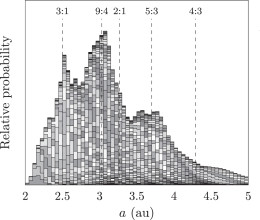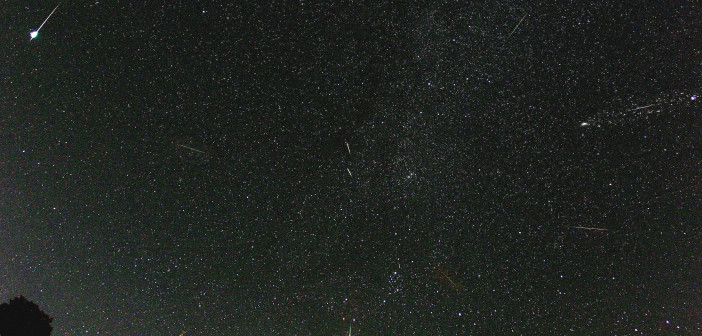Meteor showers occur when the Earth passes through a stream of debris left behind by a comet or asteroid as it loops around the Sun. For many meteor showers, we know exactly what the source is — for instance, the popular Perseid meteor shower is caused by debris from Comet 109P/Swift-Tuttle.
Another, lesser-known mid-August shower poses a mystery: the source of the Kappa Cygnid (KCG) meteor shower remains unknown. But new data from the especially strong 2014 KCG shower may help us to identify the missing parent body.
An Unpredictable Shower
The KCGs and the Perseids both occur at roughly the same time of year. Unlike the Perseids, however, the KCG shower is highly variable: it makes a strong showing some years and is completely undetected in others.
In 2014, the KCGs showed an unusual level of activity, conveniently allowing us to obtain an unprecedented number of observations of these meteors. Now a team of scientists, led by Althea Moorhead of the NASA Meteoroid Environment Office, has used these observations to better understand the KCGs and try to identify their source.

One example (see the paper for the original image and more details) of the distribution of semi-major axes found for KCG meteors. Clustering of semi-major axes can be seen around Jupiter orbital resonances, which are marked by the dashed vertical lines. Click for a better look! [Moorhead et al. 2015]
Precise Trajectories
The 2014 KCGs were detected in a variety of meteor observation networks and instrument suites, from radar to video to photographic. From these observations, Moorhead’s team selected 75 meteors as belonging to the KCG shower. These observations represent the most precisely measured set of KCG meteor trajectories to date.
In characterizing the KCGs, the team found that these meteors are unusual: instead of having a single characteristic orbit, they exhibit a broad range of orbital elements like semi-major axis, eccentricity, perihelion distance, and inclination. Many of the meteors’ semi-major axes are in near-resonances with Jupiter, suggesting that the gas giant likely affects the evolution of these meteors’ orbits.
Simulating Streams
After characterizing these meteors, the authors carried out a series of N-body simulations of the meteor streams, hoping to identify a parent body. The results were mixed. The team found that two of the potential parent bodies, asteroids 2002 LV and 2001 MG1, could produce meteoroids that would intersect the Earth’s orbit. But their orbital parameters don’t quite line up with the KCGs: the meteors that these asteroids produce are slightly too slow, with too low an inclination.
Moorhead and collaborators argue that 2001 MG1 is nonetheless promising as a potential parent, because its orbit isn’t well-measured. Future refinement of these measurements might help resolve these discrepancies and solidify 2001 MG1’s claim as parent to the KCGs.
Citation
Althea V. Moorhead et al 2015 AJ 150 122. doi:10.1088/0004-6256/150/4/122

